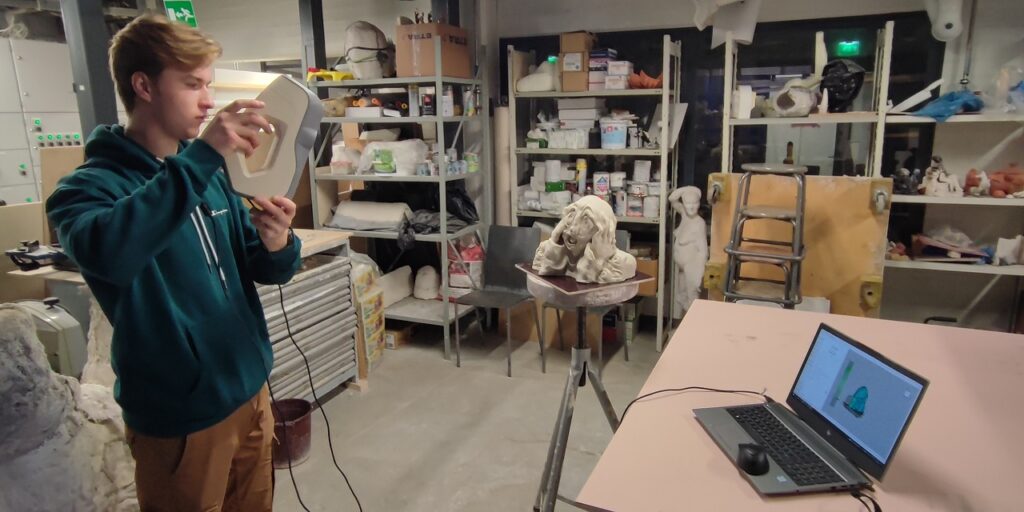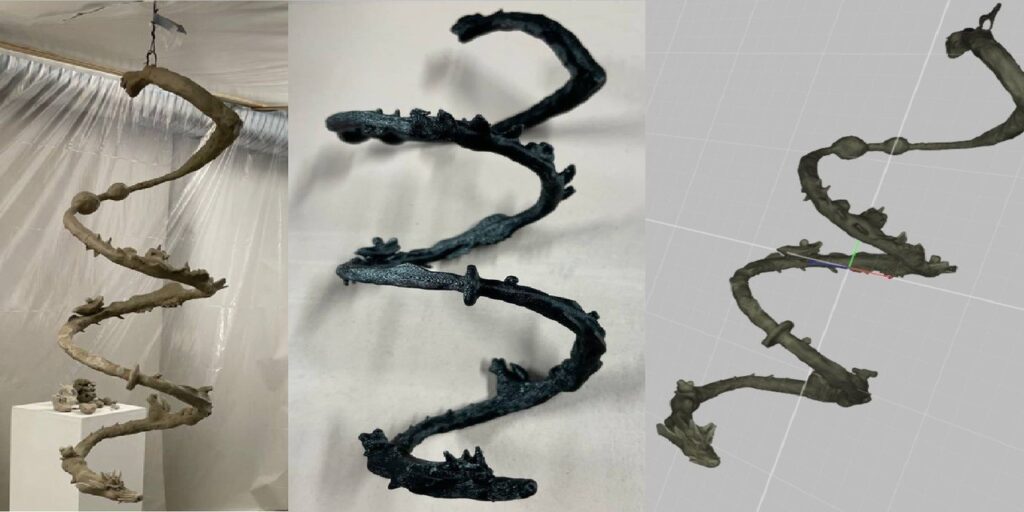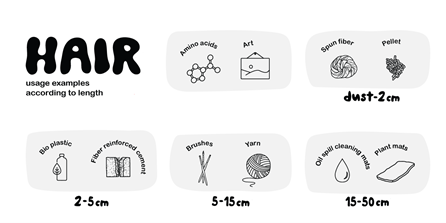For anyone who is creating something during their studies or working processes may be interested in saving their practical project as a good memory. This memory can be eternalized by a 3D model in a real scale. Here comes the reverse engineering of a component. It consists of 3D scanning the desired object, cleaning up the scanned data and exporting it to the computer aided design (CAD) program. The Artec EVA 3D scanner and related software allows to bring this engineering idea into real life.
As a result, realistic 3D models are created with high dimensional accuracy. The applicable stereolithography (STL) files for the printing software are derived from 3D models and are used for 3D printing purposes. Eternalizing the practical projects is only one application of such technology which is universally used. Apart from it, one can versatilely utilize 3D scanning technology in translation of any engineering masterpiece in any kind of computer format.

Scanning of the clay sculptures
The Mechanical Engineering team from LAB University of Applied Sciences was assigned to a project with the LAB Fine Arts department, who had an interest to save their sculptures made of clay for future 3D printing. 3D Scanning technology was chosen due to ability to capture the objects with high accuracy and geometry compared to usual photography. Additionally, 3D printing is a rapid way to transfer a 3D model into a real component.
Using the equipment in the proper way with the right preparations allowed the processes to go through smoothly. The surfaces of sculptures are not reflective, and clay has neutral color. Both features are helpful when using Artec EVA 3D Scanner. Additionally, objects were placed on the rotating plate so there was no need to go around it with all the cables under your legs. The tricky part of the task was to capture the internal areas and small details of the clay sculptures. Thanks to ArtecStudio software the algorithms can recognize most of the parts and construct them by itself. From start to finish these processes took about an hour for each object.
As the first raw scans appear like randomly taken pictures but after certain cleaning and processing of them, they begin to look like a realistic model with multiple details and geometry. By following the required steps and paying a bit of attention to details satisfactory results appear. From having a clay sculpture to 3D model that can be used for different purposes and saved as a warm memory about the work done.
To complete 3D printing correctly Prusa 3D printers were used in Jamie Hyneman Center at LUT University. This equipment helped the team to get the scans printed with high accuracy and fast. During the printing the team noticed that sculptures could not be printed in the original scale due to the limits of the printer. To keep the process rapid enough and save details several sculptures were printed on a scale 1/10 to the original size.

During this project the team learned that it is possible to scan clay sculptures, save them as 3D models, and print them with rapid prototyping methods if needed. Overall, it is possible to mention that 3D scanning combines engineering and computer technology with areas such as fine arts and others.
Authors
Roman Evseev is a mechanical engineering student in LAB University of Applied Sciences. His main task has been to investigate the possibilities of 3D scanning for engineering needs and cooperation between departments.
Nikita Mosiagin is a mechanical engineering student in LAB. His main work has been focused on investigating the possibilities of 3D scanning for machining applications and translating the scans to different CAD softwares.
Eero Scherman is a senior lecturer at LAB in mechanical engineering. His research interests are research focusing on mechanical engineering with special interest in manufacturing aspects of rotating electrical machines.




